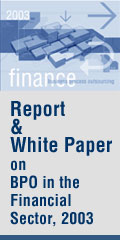|
  Join "The Bankers Club" - An Exclusive Club for Bankers & Ex - Bankers .... Read more
Join "The Bankers Club" - An Exclusive Club for Bankers & Ex - Bankers .... Read more
Introduction
Automated Teller Machines (ATMs) have gained prominence as a delivery channel for banking transactions in India. Banks have been deploying ATMs to increase their reach. As at the end of December 2007, the number of ATMs deployed in India was 32,342.
From first day of April 2009, entire ATM network is now available to customers from any bank for transactions for no fee at all, irrespective of the banks in which they have their accounts, Now Customers will not be levied any fee on cash withdrawals using ATM and debit cards issued by other banks. This will in turn increase usage of ATMs in India.
More people are now moving towards using the automated teller machines (ATM) for their banking needs. According to a survey by Banknet India, 95% people now prefer this modern channel to traditional mode of banking. Almost 60% people use an ATM at least once a week.
Increased ATM usage is also helped by the fact that customers have now the flexibility of using ATMs of other banks, as most of the banks are part of major interbank networks like National Financial Switch (NFS), Mitr, BANCS, Cashtree and Cashnet. The interbank networks have brought together ATMs of several banks so that consumers would gain access to any of the participating banks’ ATMs. Banks find it cheaper to pay membership fees to these networks as against setting up additional units in expensive-to-deploy areas.
ATMs are now seen to be more than mere cash dispensing machines. Customers use ATMs to recharge their mobile phone pre-paid connections, pay their utility bills, even mutual fund transactions – making them at par with flexibility given in internet banking – only more secure. Of the value-added services provided at ATMs, bill-payment is the most used service, followed by prepaid mobile talk-time recharges. However, still about one third of the respondents do not use any value added services at ATMs.
The ATM market in India is not yet saturated. Though the concentration of ATMs is greater in metros, the demand is increasing for other cities and even rural areas. ATM's per million people approximately is 33 units is very low. Experts forecast that the growth rate (CAGR) is expected to grow 18 percent up by 2013. Banks going into a self service model can have huge saving potential for banks and may also increase the convenience for the customers.
Many ATM vendors have devised specialised machines, embedded with biometric devices for authentication. Catering to the rural population, these machines have enabled them to interact with the machine in their local language and on a graphical user interface. The rural customer has seemed to accept this new medium. This has the potential to further widen the scope of ATM usage in the interior parts of the country.
There is also interest towards white-label ATMs. Many companies are interested in this model, where the ownership of the ATM will not be with the banks but with third parties who deploy them and make money on fees charged on every transaction. The concept is prevalent in the American continent.
Wide acceptance of ATMs by consumers, introduction of biometric ATMs, and increasing scope of value-added ATM services will maintain growth in the industry.
History
The first Automated Teller Machine (ATM) was introduced
in the year 1967 by Barclays Bank in Enfield Town in North London. At that
time a few would have anticipated excess in ATMs. Then for many years after,
the aim was to shift people off the teller lines thus lowering a bank‘s
distribution costs and increase efficiency. But in the 1980s, it was noticed
that people continued to visit branches, though not as frequently, so that
with the added costs of ATMs, overall distribution costs were actually
rising.
Then, in the mid-1990s, came surcharges, which fuelled
the proliferation of off-premises ATMs, which led in turn to the current
overcapacity. There was a slowdown in ATM transactions, partially because of
the consumer’s reaction to the imposition of surcharges. Also by the advent
of surcharging there was a massive growth in the number of ATMs as it
offered ATM owner’s revenues making it economical to install ATMs where they
might not have been placed otherwise.
|



|




